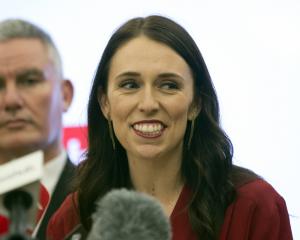
It reverberated through the National Party's conference. Ministers can't get enough of the sound of it.
Even Steven Joyce, as hard-nosed a capitalist as you will find in the cabinet, spread ``investment'' through his commentary on the budget's ``social'' bits.
But is this actually investment?
Capitalists invest to generate assets, to get a return, a dividend. The rate of return from their investments measures their skill. So decisions on whether to invest and what to invest in usually hinge on the expected rate of return.
The Government's big infrastructure programme, into which it now lumps school, hospital and house building in addition to roads, broadband and dams, is investment - in physical, usable assets which don't return money directly to taxpayers but do enable cost savings or profitable activities or add measurable value to daily lives. The upfront cost is set against the expected monetary benefit.
In 2011, Bill English imported this thinking into social assistance programmes, which are normally thought of as spending or consumption, not investment. These add value to lives but only to some people, those on low or no income, victims of circumstance, the homeless, ill and disabled.
Fiscal conservative Mr English wanted to lower this cost to taxpayers.
He adapted, via the Welfare Working Group, the ACC's ``forward liability investment approach''. This actuarially measured the future cost of people going on and staying on a benefit.
If they could be steered into and kept in work, future taxes could be lower and there would be more for the private sector to invest or spend.
Critics saw this as a crude money-skimping mechanism - dumping people off the Treasury's books, regardless of their and their dependants' wider needs or their potential self-improvement from education and better health and not taking into account the value to society of assurance of help in time of need.
Forward liability avoidance is not how a capitalist would see investment. It is like paying down a mortgage and not ending up with a house.
Proponents point to reduced benefit numbers, a reduction in the forward fiscal liability as a result of more targeted intervention and more intensive focus by frontline staff time on those most likely to get into and stay in work.
The latest analysis by actuaries Taylor Fry in May calculated the forward liability in mid-2016 at $76billion, which was $14billion lower than the 2012 estimate, adjusted for changes in economic assumptions and benefit rates.
Last week, the Ministry of Social Development (MSD) issued a Taylor Fry estimate of the future cost of ``social housing'' - the provision of houses, income-related rent subsidies, accommodation supplements and temporary additional support. Based on those on the social housing register in 2014-15, that comes to $16.4billion.
This will have been driven up since by the leap in rents as a result of the house shortage, particularly in Auckland, in part driven by record net immigration, about six times 2000s decade average levels.
The study found that those now in the social housing system will spend an average of another 17 years there.
Interestingly, MSD said it ``won't be looking to reduce liability each year. If we do the right thing and house the people who are most in need, this liability will go up''.
Is this investment?
MSD says there have been some co-benefits in its beneficiaries programme, both for some ex-beneficiaries and in frontline staff job satisfaction.
So, given time, the thin ACC idea could be reworked as asset-building. Examples: children and teenagers from awful backgrounds who gain self-control and self-confidence, become socialised and so get properly educated, work and pay taxes; ex-prisoners who give up crime and turn to productive work.
Likewise, a good house could be rethought as the foundation of a good household and so investment, not charity.
Hence the term, ``social return on investment''. It sounds waffly but serious attempts are now being made to measure it.
Last week Te Pou Matakana, the North Island whanau ora commissioning agency, issued a report by Simon Faivel, of Social Ventures Australia, on the expected ``impact'' through 2016-19 of Taitamariki, run by John Tamihere's Te Whanau o Waipareira for young teenagers with traumatic backgrounds.
This projects a return of $1.2million on interventions costing $699,000.
The Treasury is requiring such calculations through its CBAx (cost-benefit-plus) test of social programmes. ``Outcomes'' or ``impacts'' must be specified, with evidence tested by an outside panel and agencies' external science advisers.
Yesterday, as this column was filed, the Social Investment Agency was running a five-hour data-based update by five ministries working to focus on real ``investment'' thinking. So will such a scan in 2022 measure real ``assets''? Or will ``investment'' by then have been a passing fad?
Colin James is a leading social and political commentator. ColinJames@synapsis.co.nz












